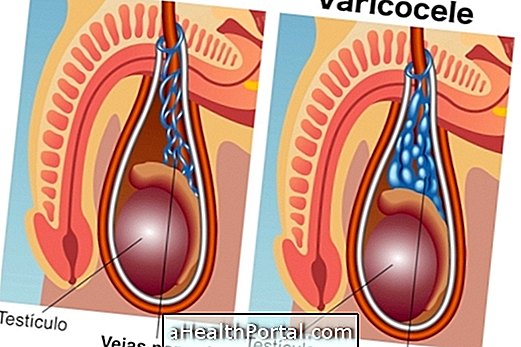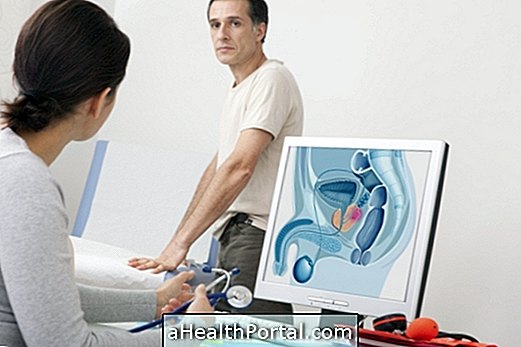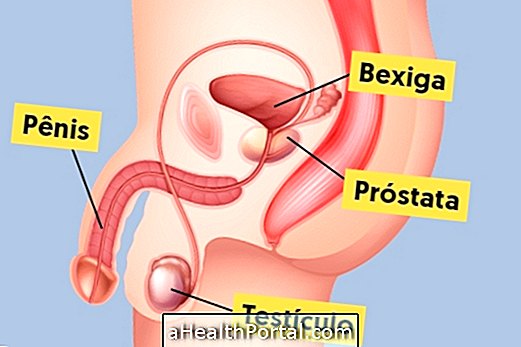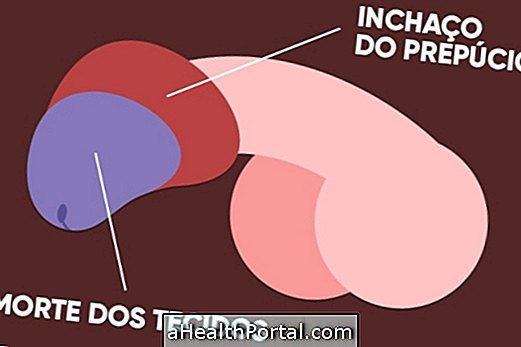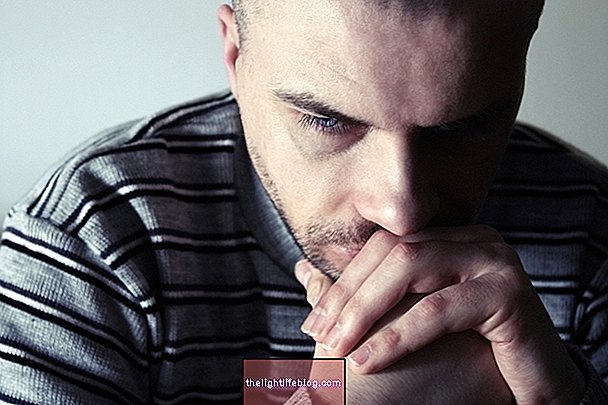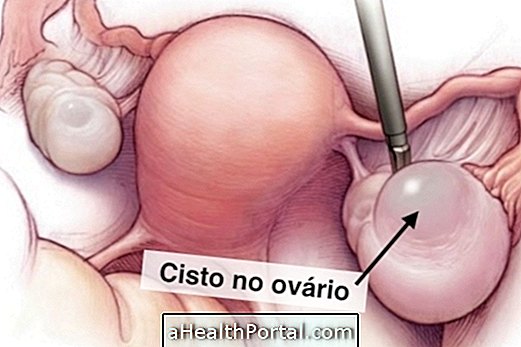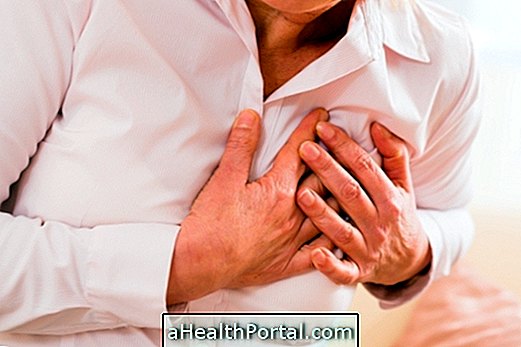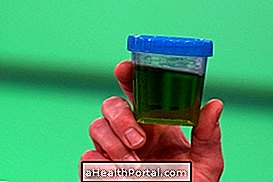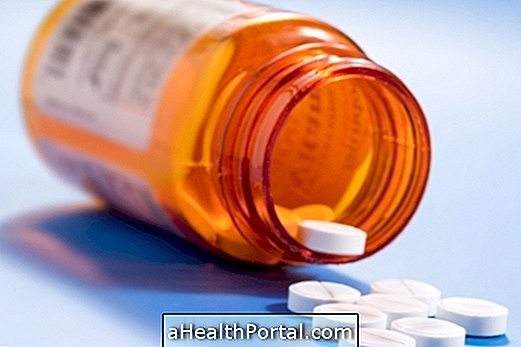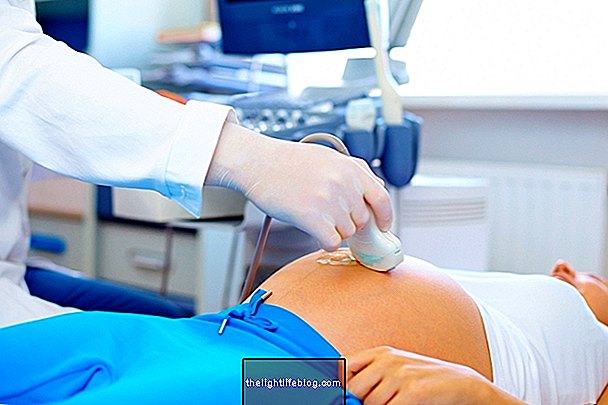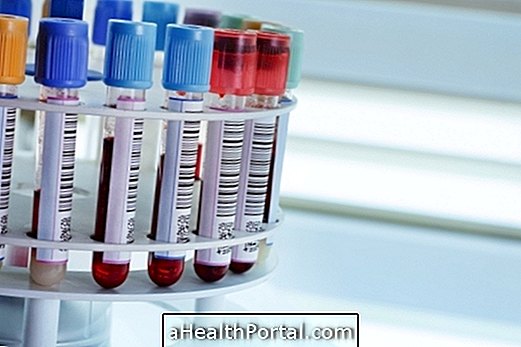The lump in the testicle, also known as a lump in the testicle, is a relatively common symptom that can occur in men of any age, from children to the elderly. However, the lump is rarely a sign of a serious problem like cancer, whether or not accompanied by pain or other symptoms such as swelling or feeling of pressure.
However, in any case it is always important that the lump is evaluated by a urologist, as it is the only way to confirm whether or not it is a serious problem. And even if it is not severe, the lump is being caused by some change, which may or may not require treatment.
Also know the main causes of pain in the testicles.
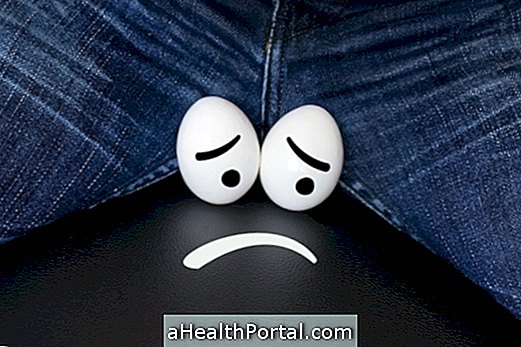
1. Hydrocele
The hydrocele is a small pocket of fluid that accumulates near the testicle and can therefore lead to the appearance of a lump. This problem is more common in babies, but it can also happen in adult males, especially after 40 years. Although not a serious problem, its size can vary greatly, and the larger can even lead to the onset of pain and discomfort.
- How to treat : Usually no treatment is needed, but if it is causing a lot of discomfort the urologist can advise a minor surgery with local anesthesia to make a small cut in the scrotum and remove the hydrocele. Learn more about this problem and when surgery is needed.
2. Varicocele
This problem occurs when the veins, which carry the blood of the testicles, dilate and become wider than normal, eventually accumulating blood and generating the sensation of a lump. This is the main cause of lump in the left testicle, but it can happen on both sides. In these cases, it is also common to feel pain and feeling of weight.
- How to treat : most often varicocele is controlled with analgesic medicines like Dipyrone or Paracetamol, but if there is risk of infertility, the doctor may recommend having surgery to close the vein that is dilated and to make the blood go through only those that still are healthy, improving the functioning of the testicle. Understand more about varicocele.
3. Epididemite
The epididymitis arises when the epididymis, which connects the testis to the vas deferens, becomes inflamed, usually due to a bacterial infection that occurs in cases of unprotected anal sex. In addition to the lump in the testicle, other symptoms such as pain, fever and chills may develop.
- How to treat : You need to take antibiotics to fight infection, usually with 1 injection of ceftriaxone and 10 days of use of doxycycline tablets.

4. Torsion of the testicle
Testicular twisting is usually one of the easiest problems to identify in the testicle because it causes a sudden and very intense pain as well as swelling and lump in the testicle. Twisting is more common in boys and men under the age of 25.
- How to treat : Testicular torsion is a medical emergency and therefore treatment with surgery should be started within the first 12 hours to prevent the death of testicular tissues. Thus, in the event of suspected torsion, it is very important to go quickly to the emergency room. Understand more about when the twisting of the testicle may occur.
5. Cyst in the epididymis
This type of cyst, also known as spermatocele, consists of a small sac that forms in the epididymis, the site where the vas deferens attaches to the testis. In most cases, the cyst does not cause pain, but if it continues to grow over time, in addition to a lump attached to the testicle, pain or discomfort may also arise.
- How to treat : Treatment is needed when symptoms develop, being started with the use of analgesics, such as Acetaminophen or Ibuprofen. However, if there is no improvement after 2 weeks it may be necessary to undergo general anesthesia surgery to remove the cyst. Learn more about how surgery is done and how recovery is.
Inguinal hernia
The onset of inguinal hernias occurs when a portion of the intestine can pass through the muscles of the abdomen and is therefore more common in cases of abdominal weakness, as in children, the elderly and people who have had surgery. This hernia can sometimes leak into the scrotum, creating a lump in the testicle.
- How to treat : It needs to be treated with surgery to replace the portion of the intestine inside the abdominal region. Learn more about how the hernia is treated.

7. Testicular cancer
Although it is one of the rarer situations, the development of cancer in the testicle can also cause the growth of a small lump in the testicle. Usually, cancer develops without causing any pain, so it is very important that any type of lump is evaluated by a urologist, even if it does not cause pain. See which signs may indicate cancer.
- How to treat : In almost all cases it is necessary to remove the affected testicle to prevent some cancer cells from surviving and infecting the other testicle or forming metastases for the rest of the body.
When to go to the doctor
Symptoms that indicate that it is important to go to the emergency room quickly include:
- Very intense and sudden pain;
- Exaggerated swelling in place;
- Fever and chills;
- Nausea and vomiting.
However, in any case it is always important to go to the urologist to evaluate the lump, since even if no symptoms appear, a problem that needs treatment or that is very serious, such as cancer, may be developing.
